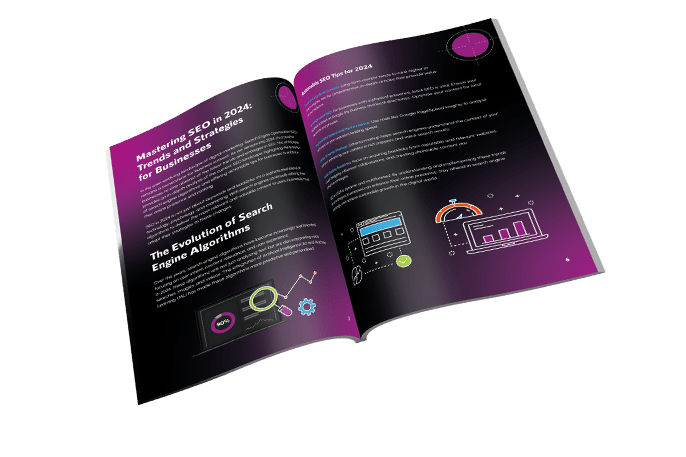News
Navigating the Cookieless Web in 2025: Essential Advice for Digital Marketers
The digital marketing landscape is undergoing one of its most significant transformations: the move towards a cookieless web. With increasing concerns about privacy and data security, third-party cookies—the foundation of many online advertising strategies—are being phased out. As we navigate 2025, digital marketers must adapt to this new paradigm.
This article provides essential advice on leveraging first-party data, adopting transparent data collection practices, and building trust with users while respecting their privacy.
Understanding the Shift to a Cookieless Web
The decision to phase out third-party cookies was driven by growing consumer demand for privacy and regulatory pressures. Browsers such as Safari and Firefox already block third-party cookies by default, and Google Chrome, the most widely used browser, has committed to eliminating them. Meanwhile, data protection regulations like the GDPR and CCPA further emphasise the importance of user consent and transparency.
This shift poses challenges for marketers who have long relied on cookies for tracking, personalisation, and targeted advertising. However, it also presents an opportunity to adopt more ethical, privacy-focused practices that foster stronger relationships with audiences.
Leveraging First-Party Data
First-party data is information collected directly from users with their consent. Unlike third-party data, it is more reliable, accurate, and compliant with privacy laws. By focusing on first-party data, marketers can create personalised experiences while respecting users’ preferences.
Strategies for Collecting First-Party Data
- Optimise Website and App Interactions Encourage users to engage directly with your platforms. This can include signing up for newsletters, creating accounts, or participating in loyalty programmes. Ensure these interactions are seamless and provide clear value to the user.
- Leverage Content Marketing Offer high-quality, gated content such as eBooks, whitepapers, or exclusive webinars. Require users to provide their email addresses or other basic information to access the content.
- Enhance Surveys and Feedback Mechanisms Use surveys and feedback forms to gather insights. This approach not only provides data but also demonstrates that you value your audience’s opinions.
- Use Offline Channels Integrate offline customer interactions with your digital strategy. For instance, collect data at in-store touchpoints or events and merge it with your online data systems.
Adapting to Privacy Changes
The cookieless web demands a proactive approach to privacy. Marketers must embrace transparency, gain explicit consent, and offer users control over their data.
Transparent Data Collection Practices
- Implement Clear Privacy Policies Your privacy policy should be concise and easy to understand. Highlight what data you collect, why you collect it, and how it benefits the user.
- Use Consent Management Platforms (CMPs) CMPs simplify the process of obtaining and managing user consent. These tools enable users to make informed choices about their data and provide a clear audit trail for compliance purposes.
- Educate Your Audience Use blog posts, videos, or FAQs to explain how data collection works and its benefits. Transparency builds trust and encourages users to opt in willingly.
Personalisation with User Consent
- Contextual Targeting Shift from behavioural targeting to contextual targeting, which tailors ads based on the content being consumed rather than user history.
- Preference Centres Provide users with a dashboard where they can manage their preferences and update their consent choices. This demonstrates respect for their autonomy.
- AI-Powered Insights Use AI to analyse first-party data and create personalised experiences without compromising privacy. Machine learning models can identify patterns and preferences while anonymising sensitive data.
Building Trust in a Privacy-Focused Era
Trust is the cornerstone of successful digital marketing in a cookieless world. Brands that prioritise transparency and respect for privacy will gain a competitive edge.
Tips for Building Trust
- Communicate Value Clearly Explain how data collection enhances the user experience. For example, show how sharing preferences can lead to more relevant recommendations or personalised offers.
- Deliver on Promises Consistency is key. If you promise to protect user data or provide certain benefits, ensure you follow through.
- Focus on Ethical Practices Avoid intrusive tactics such as excessive pop-ups or misleading consent banners. Ethical practices reinforce your brand’s integrity.
Alternative Solutions for Targeting and Measurement
The cookieless web doesn’t mean the end of targeting and measurement; it simply requires new approaches.
Server-Side Tracking
Server-side tracking allows businesses to collect data directly from their servers rather than relying on third-party cookies. This method is more secure and compliant with privacy regulations.
Data Clean Rooms
Data clean rooms are secure environments where multiple parties can share anonymised data for analysis. These spaces allow for collaboration while maintaining privacy.
Federated Learning of Cohorts (FLoC) and Topics API
Google’s FLoC and its successor, the Topics API, are designed to replace third-party cookies by grouping users into interest-based cohorts. While these solutions have limitations, they offer a way to target users without tracking individual behaviour.
Partnerships with Walled Gardens
Platforms like Facebook, Google, and Amazon operate as “walled gardens,” where they control user data within their ecosystems. Marketers can leverage these platforms for targeting while adhering to privacy standards.
Embracing a Privacy-First Future
The cookieless web marks a shift towards a more ethical and sustainable digital ecosystem. While the transition may seem daunting, it is an opportunity for marketers to innovate and build stronger, more authentic relationships with their audiences.
Key Takeaways for Digital Marketers
- Prioritise First-Party Data Invest in strategies that encourage direct interactions with your audience. This data is more valuable and compliant.
- Adopt Privacy-Respecting Practices Transparency, consent, and user control should be at the core of your data strategy.
- Leverage Technology Tools like AI, data clean rooms, and CMPs can help you navigate the cookieless web effectively.
- Focus on Trust Trust is a long-term investment. Brands that respect user privacy and deliver value will thrive in this new landscape.
By embracing these principles, digital marketers can not only survive but also thrive in the cookieless web of 2025. This is a pivotal moment to redefine how we connect with audiences, ensuring that privacy and personalisation go hand in hand.





The Ultimate Social Media Guide
With the ever-growing power of social media, we use the latest techniques, video, and animation software to craft eye-catching social media assets that make your brand pop. Our designers, wielding Adobe Creative tools, create distinctive animations and graphics to illuminate your brand story and highlight your products or services. Want a unique design? No problem – we also offer bespoke designs to match your brand aesthetic.